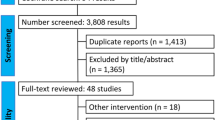Abstract
Purpose
Previous studies have shown gender differences in preoperative status and outcome of spine surgery. This study explores whether gender differences in preoperative demographics exist in patients scheduled for lumbar disc herniation (LDH) surgery.
Methods
This study includes the preoperative data of the 15,631 patients operated for LDH between years 2000 and 2010, registered in the national Swedish spine register (SweSpine). We analysed preoperative gender differences in age, smoking habits, walking distance, consumption of analgesics, back and leg pain (Visual Analogue Scale; VAS), quality of life (EuroQol; EQ 5D and Short Form-36 Questionnaire; SF-36) and disability (Oswestry Disability Index; ODI).
Results
44 % of the patients were women (mean age 45 ± 13) and 56 % men (mean age 44 ± 13). More women than men were smokers (26 versus 21 %, p < 0.001). Women also reported inferior walking ability (less than 100 metre walking ability 37 vs 30 %; p < 0.001), consumed more analgesics (92 versus 84 %; p < 0.001), reported higher level of pain (mean difference VAS leg 6 (95 % CI 5–7)), had inferior health-related quality of life (mean difference EQ 5D 0.07 (95 % CI 0.05–0.08)) and had higher disability (mean difference ODI 6 (95 % CI 5–6)).
Conclusions
Women scheduled for LDH surgery report inferior clinical status than men scheduled for the same operation. We have in the literature found no evidence-based data that support such a difference, and the reason for the discrepancy is unclear.

Similar content being viewed by others
References
Stromqvist B, Fritzell P, Hagg O, Jonsson B, Sanden B, Swedish Society of Spinal S (2013) Swespine: the Swedish spine register: the 2012 report. Eur Spine J 22:953–974. doi:10.1007/s00586-013-2758-9
van Tulder MW, Koes BW, Bouter LM (1995) A cost-of-illness study of back pain in The Netherlands. Pain 62:233–240
Stromqvist F, Ahmad M, Hildingsson C, Jonsson B, Stromqvist B (2008) Gender differences in lumbar disc herniation surgery. Acta orthopaedica 79:643–649. doi:10.1080/17453670810016669
Peul WC, Brand R, Thomeer RT, Koes BW (2008) Influence of gender and other prognostic factors on outcome of sciatica. Pain 138:180–191. doi:10.1016/j.pain.2007.12.014
Stromqvist B (2002) Evidence-based lumbar spine surgery. The role of national registration. Acta Orthop Scand Suppl 73:34–39
Stromqvist B, Fritzell P, Hagg O, Jonsson B (2005) One-year report from the Swedish National Spine Register. Swedish Society of Spinal Surgeons. Acta Orthop Suppl 76:1–24. doi:10.1080/17453690510041950
Stromqvist B, Fritzell P, Hagg O, Jonsson B, Swedish Society of Spinal S (2009) The Swedish Spine Register: development, design and utility. Eur Spine J 18 Suppl(3):294–304. doi:10.1007/s00586-009-1043-4
Peul WC, van Houwelingen HC, van den Hout WB, Brand R, Eekhof JA, Tans JT, Thomeer RT, Koes BW, Leiden-The Hague Spine Intervention Prognostic Study G (2007) Surgery versus prolonged conservative treatment for sciatica. N Engl J Med 356:2245–2256. doi:10.1056/NEJMoa064039
Weinstein JN, Tosteson TD, Lurie JD, Tosteson AN, Hanscom B, Skinner JS, Abdu WA, Hilibrand AS, Boden SD, Deyo RA (2006) Surgical vs nonoperative treatment for lumbar disk herniation: the Spine Patient Outcomes Research Trial (SPORT): a randomized trial. JAMA 296:2441–2450. doi:10.1001/jama.296.20.2441
Spangfort EV (1972) The lumbar disc herniation. A computer-aided analysis of 2,504 operations. Acta Orthop Scand Suppl 142:1–95
Shimia M, Babaei-Ghazani A, Sadat BE, Habibi B, Habibzadeh A (2013) Risk factors of recurrent lumbar disk herniation. Asian J Neurosurg 8:93–96. doi:10.4103/1793-5482.116384
Miwa S, Yokogawa A, Kobayashi T, Nishimura T, Igarashi K, Inatani H, Tsuchiya H (2013) Risk factors of recurrent lumbar disc herniation: a single center study and review of the literature. J Spinal Disord Tech. doi:10.1097/BSD.0b013e31828215b3
An HS, Silveri CP, Simpson JM, File P, Simmons C, Simeone FA, Balderston RA (1994) Comparison of smoking habits between patients with surgically confirmed herniated lumbar and cervical disc disease and controls. J Spinal Disord 7:369–373
Kelsey JL, Githens PB, O’Conner T, Weil U, Calogero JA, Holford TR, White AA 3rd, Walter SD, Ostfeld AM, Southwick WO (1984) Acute prolapsed lumbar intervertebral disc. An epidemiologic study with special reference to driving automobiles and cigarette smoking. Spine 9:608–613
OECD (2013) Health at a Glance 2013 OECD Indicators. 54–55. doi:10.1787/health_glance-2013-en
Giantomaso T, Makowsky L, Ashworth NL, Sankaran R (2003) The validity of patient and physician estimates of walking distance. Clin Rehabil 17:394–401
Okoro T, Qureshi A, Sell B, Sell P (2010) The accuracy of assessment of walking distance in the elective spinal outpatients setting. Eur Spine J 19:279–282. doi:10.1007/s00586-009-1152-0
Initiative USBaJ (2011) The burden of musculoskeletal diseases in the United States, 2nd ed
Sullivan MK, J, Ware J (1994) SF-36 hälsoenkät : svensk manual och tolkningsguide. Book 10:29–31
Fairbank JC, Couper J, Davies JB, O’Brien JP (1980) The oswestry low back pain disability questionnaire. Physiotherapy 66:271–273
Kim HJ, Suh BG, Lee DB, Park JY, Kang KT, Chang BS, Lee CK, Yeom JS (2013) Gender difference of symptom severity in lumbar spinal stenosis: role of pain sensitivity. Pain physician 16:E715–E723
Kim HJ, Cho CH, Kang KT, Chang BS, Lee CK, Yeom JS (2015) The significance of pain catastrophizing in clinical manifestations of patients with lumbar spinal stenosis: mediation analysis with bootstrapping. Spine J 15:238–246. doi:10.1016/j.spinee.2014.09.002
Hawker GA, Wright JG, Coyte PC, Williams JI, Harvey B, Glazier R, Badley EM (2000) Differences between men and women in the rate of use of hip and knee arthroplasty. N Engl J Med 342:1016–1022. doi:10.1056/NEJM200004063421405
Conflict of interest
We have no potential conflict of interest.
Author information
Authors and Affiliations
Corresponding author
Rights and permissions
About this article
Cite this article
Strömqvist, F., Strömqvist, B., Jönsson, B. et al. Gender differences in patients scheduled for lumbar disc herniation surgery: a National Register Study including 15,631 operations. Eur Spine J 25, 162–167 (2016). https://doi.org/10.1007/s00586-015-4052-5
Received:
Revised:
Accepted:
Published:
Issue Date:
DOI: https://doi.org/10.1007/s00586-015-4052-5




